"Where we going, man?" asks the narrator, Sal Paradise, in Jack Kerouac's On the Road.
"I don't know but we gotta go," replies his friend Dean Moriarty.
The first rule of American road trips is to be bored with wherever you come from. Everything else is up for grabs.
You can have testosterone-fuelled road trips (On the Road) or feminist ones (Thelma & Louise). You can forget the family (Hunter S Thompson), or take them with you (Little Miss Sunshine).
You can escape corporate America (Easy Rider), or try to redeem it (Mark Zuckerberg's 2017 apology tour). You can praise Iowa (Kerouac: "the prettiest girls in the world live in Des Moines") or be honest (Bill Bryson: "I come from Des Moines. Somebody had to").
Everything can happen on the road - because, as Kerouac wrote, the road is life. Over the past century, the road has been carved into American life through literature, politics and geography.
Electric dream
In October, it’ll be 50 years since Kerouac died, alcoholic and miserable, but his legacy remains the romantic vision of endless driving. There is, however, a complication. The cars of the future are electric. Electric vehicles rely on planning and recharging. Road trips rely on spontaneity and distance. Kerouac never worried about running out of gas. (He worried about running out of money for gas, which is different.)
Can you criss-cross America without gasoline? Technically, yes. Tesla, which dominates the US's electric car market, has built a network of 1,533 Supercharger stations, where you can recharge a vehicle within an hour. It says that you can drive from New York to San Francisco with 21 strategically timed recharges.
But America has 100 filling stations for every Tesla station. An online calculator tells me that I could drive a Honda Civic from New York to San Francisco with a mere five filling stops.
Electric vehicles’ added hassle remains a major turn-off for many potential car buyers. “It’s called range anxiety, and yes you do have it. ‘Am I going to get there?’” I was told by one Tesla enthusiast, who had nonetheless managed 13,000 miles in four months.
Fragile future
Partly as a result, the Tesla revolution is fragile. Elon Musk's company is lossmaking again, even though it mostly sells expensive cars to rich US buyers. Musk's plan was to inspire other carmakers to go electric; some, like Jaguar, are only now testing the market seriously. The jury is out.
Even California, home of the electric car, is struggling to meet its target of five million zero-emission vehicles on the road by 2030. Los Angeles is almost certain to miss its goal of 80 per cent electric or zero-emission vehicles by 2035; such cars currently account for just 1.4 per cent of the market, and existing combustion-engine cars now have an average lifespan of more than 11 years.
For me, there is a personal motivation to seeing electric cars take off. Living in London, I have never felt the need to own a car. But living temporarily in San Francisco, I quickly found myself running out of better options. Journeys often took twice as long by public transport - if they were even possible. The proposed high-speed train between San Francisco and Los Angeles has been downsized. In some places, Uber and Lyft are replacing buses and trains. After a night out, my acquaintances seemed to think drink-driving was less eccentric than walking home.
Millennials are just as keen on buying cars as previous generations, once you control for demographics and economic factors, a recent academic paper found. The endless hum of traffic beneath my apartment window was the soundtrack of climate catastrophe. Transportation accounts for nearly 30 per cent of the US’s greenhouse gas emissions. As oil prices have gone down, car use has gone up. Electric cars promised that even I - a climate-worrier - could find a place on the road.
On the road
We are going to Reno, Nevada. Mainly out of curiosity. The city is often described as a poor man's Las Vegas - smaller and seedier. It likes to call itself the Biggest Little City in the World, which strikes me as the Most Meaningless Meaningful Slogan in the Solar System.
“Reno is the worst place I’ve ever been,” says my colleague Yui. Five minutes later, he agrees to come. His two young kids are in too, plus a photographer. That means there’s no room for another colleague who also fancies the trip. An investment banker would call this outing significantly oversubscribed.
We hire a Tesla Model 3 on a peer-to-peer car hiring website. On pick-up, the car immediately suggests that we install a 25-minute software update. What is this - the car of the future, or a four-wheeled version of Adobe Acrobat? Even the glovebox is operated from the touchscreen.
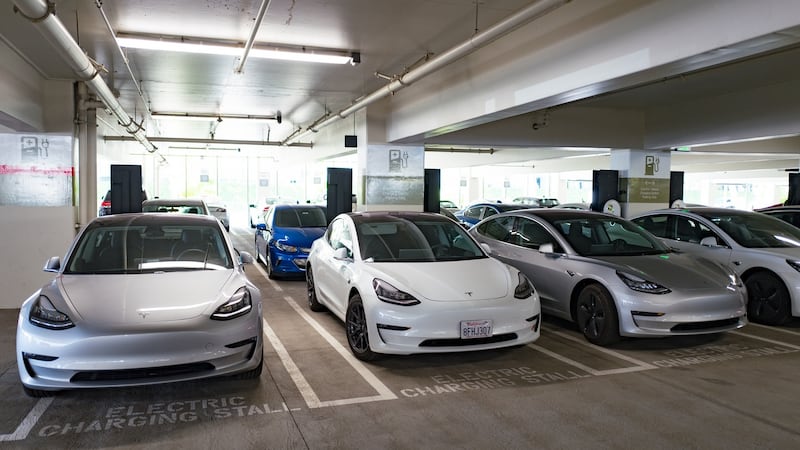
The Model 3 is the most basic Tesla, though prices start at the far-from-basic $40,000. The long-range version can travel up to 310 miles, but charging it fully shortens the battery life.
My dashboard says we have charge for 244 miles. I pick up Jason the photographer, Yui and the kids nearby, and somehow we are down to 238. This still should be OK, I think. Reno - via picturesque Nevada City - is about 230 miles away. If things get tight, we can recharge at Truckee, 30 miles nearer.
You know you have left Silicon Valley when the billboards stop advertising enterprise software and start advertising religion. I suppose they are both forms of saving things in the cloud. “Jesus said ALL THINGS are possible to those that believe,” reads one billboard. A nearby shop sells 35 flavours of wild-game jerky.
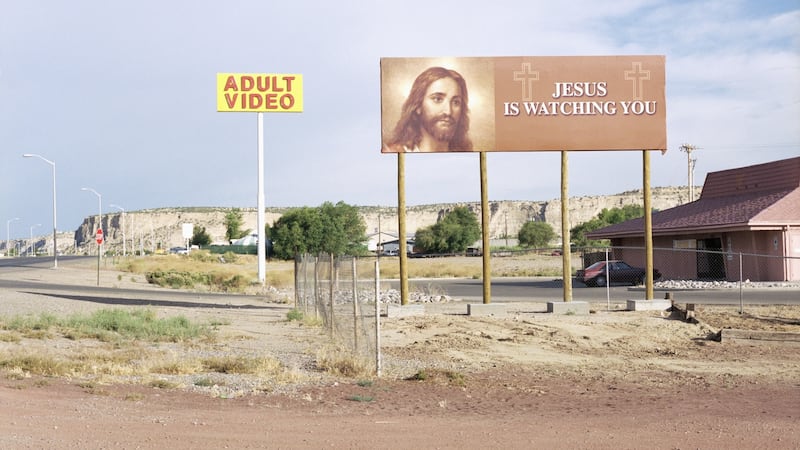
Our first stop is the California State Fair in Sacramento. The attractions include dogs "long jumping" into a huge tank of water. "You're going to see some crazy dogs jumping," says an announcer. "There is a technique to this," he adds, unconvincingly. Is this the real America? The first dog throws itself 13ft 6in into the water. It's some way short of the world record - 35ft 3in, set by an Ohio whippet named Slingshot.
We wander through a barn where farmers are blow-drying their cows. The bins are covered in plastic American flags. The kids win a soft toy by throwing ping-pong balls into floating cups. A stall is offering test drives of Ram pick-up trucks. The trucks are nearly two metres tall - the gas-guzzling antithesis of an electric car. Do I need a car like this if I live in San Francisco, I ask an attendant. “It parallel-parks itself,” he points out, hopefully.
Leaving Sacramento, the maths are getting tighter. The car has 138 miles left; we’re 142 miles from Reno. Don’t worry, I think, we can stop at Truckee.
We pull in for lunch at Cricket’s Country Kitchen - slogan: “You’re a stranger only once.” A rib-eye steak, with three eggs, potatoes and toast, is just $12.99. Presumably the price excludes health insurance. A model railway dangles from the ceiling, with a train whizzing round with the dessert menu. There are signs saying: “God watches when you tip” and “This place is not normal.”
The American way
When you plan a road trip you sometimes forget how much time you will spend staring at asphalt. On Highway 80 from Sacramento, there’s little to marvel at, except American drivers’ habit of changing lanes with no indicators or braking room. On each side there are big box retail stores with vast car parks. “It’s the American way,” says Jason.
The environmental writer Wendell Berry argued that roads actually stop people from experiencing the landscape - roads "go over the country, rather than through it". Certainly, you can't feel the soil, or the heat, or even hear the sounds.
Kerouac lived on the road because he could forgo home comforts. We live on the road because we don’t have to forgo home comforts. We have air conditioning, and music, and roadside services. The Ram truck even had noise-cancelling speakers.
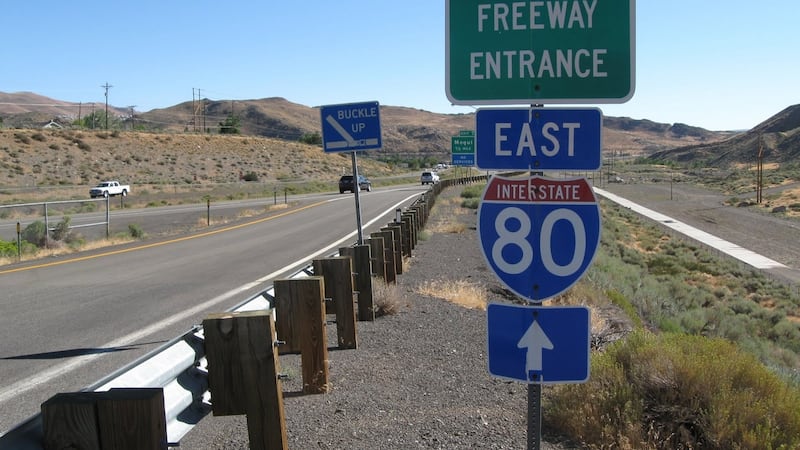
We turn off the 80, into hills lined with pine trees. Nevada City is a former gold-mining town, now lined with chichi galleries and the odd electric car. “I’ve been seeing more and more. A couple a day,” says a shop assistant, selling me a bamboo toothbrush.
We had hoped to meet Gary Snyder, a Buddhist poet and friend of Kerouac, who lives nearby. But Snyder, now aged 89, emails to say that his water-pump system has broken, and he has his work cut out fixing it. "Problem #1 with humans and the rest of the world is overpopulation - but there are plenty others," he adds for good measure. It seems rather removed from the carefree travels of the 1950s.
On the street, a man offers me half a peach, and introduces himself as Fruit Dude Pat. “This is all I’ve got left,” he says, motioning to a box of peaches in the back of his pick-up.
What's it like farming in California's Central Valley? "Hot." What if the climate keeps getting hotter? "It'll be like Death Valley. And when there's no water, nothing grows," he smiles. "You can't fight Mother Nature! Put solar panels in. You can't grow nothing? Harvest the sun!"
Truckee
The car needs to harvest some sun. We are down to 59 miles on the dashboard. Our back-up Supercharger station - Truckee - is 53 miles away. I take a deep breath and type the destination into the navigation system.
Uh-oh. Computer says no. Truckee is within the dashboard’s range, but that’s only an average, and the route is uphill. The navigation predicts we will run out of battery on a scenic mountain pass, halfway to Nevada.
We consider various strategies. Can we extend the battery life by driving slowly? Yui suggests turning off the air conditioning. “We could get towed,” shrugs Jason, who helpfully is an AAA member.
It’s a tough one. Should we embrace the joy of maybe running out of battery, or should we head back to recharge? They don’t teach this in journalism school. We reluctantly decide to go back to Sacramento for a charge.
The Supercharger station is located at a Tesla dealership on the outskirts of the city. The man is unforgiving. Do drivers often run out of battery? "No." Surely some people are idiots? "Not here. Anyway, it's roadside assistance's problem." (I ask if he owns a Tesla, and he says he's going to buy one as soon as he can afford one. Electric cars are not yet ready for the Henry Ford model of worker-consumers.)
In 30 minutes, we are ready to go. I unplug the charging cord, which is so hot it almost burns my hand.
Yui takes the wheel, and we race through the curves of the Tahoe forest. In the back, only one of the kids throws up. It’s 100F, but there’s still snow on the ground. We leave the air of California behind - “air you can kiss”, as Kerouac called it - and then Reno appears, unashamed of its seediness.
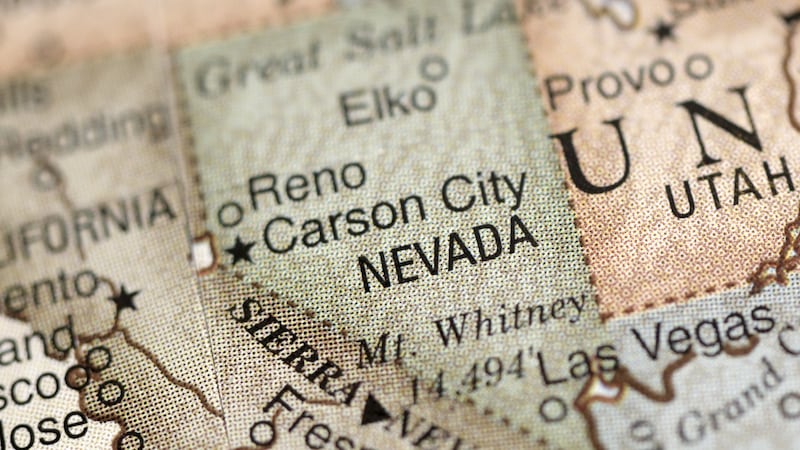
Kerouac didn't dwell on Reno. Then again, he never lived to see the Eldorado - a nine-storey car park with a hotel and casino attached. A sedan with a disabled badge has parked in the electric-vehicle charging spot. A security guard on a bicycle shakes his head and radios for back-up.
In the casino, I meet Alfonso, who arrived in the US from Mexico aged eight. He and his wife Mona are Trump supporters who live in Sacramento; Nevada is their getaway from California liberals. They know all the bar staff by name. "This is our playground," Alfonso explains. "There are no rules here." Mona is sure that one day she's going to win the big one. Alfonso, whose family were gamblers, is less convinced: "Sometimes she gets it right, sometimes she doesn't."
They show me how to play poker on the machines, and ensure the bartender keeps bringing me free beer. When we say goodbye, Alfonso leans in and says earnestly: “The world, the planet - it doesn’t matter where you go, it don’t mean anything without company.” It could have come straight from Kerouac.
Casinos are designed as mazes so gamblers can’t leave. The next morning I tried to exit the Eldorado for breakfast, but eventually gave up and resorted to eating avocado on bagel next to a row of slot machines.
Remembering Tucker
The National Automobile Museum in Reno claims to be “one of the top 10 automobile museums”. This is not as seductive a strapline as the curators think. Nonetheless, the collection of old cars does hammer home just how normal a Tesla is, at least in design. Look at the 1927 Lincoln, modelled on a horse-drawn carriage, the three-wheeled 1937 Airomobile, resembling a submersible, or the 1961 Fiat 600 D, with a curved front body that makes it look like a lozenge. These were trying to reinvent what a car looks like.
The museum also has a Tucker, with a rear engine and centre headlights. Its maker, one Preston T Tucker, was investigated by the Securities and Exchange Commission - beating Elon Musk to that distinction by fully 70 years.
Musk has said his mission is to catalyse change in the car industry towards zero-emission vehicles. But if electric cars are to dominate the market, it may take a change of approach. There are federal and state tax credits in the US - but these "are falling in the hands of those wealthy individuals who probably would have the Tesla anyway", says Antonio Bento, an economics professor at the University of Southern California.
Moreover, Musk has refused to sell his cars through independent dealers. Bento's own experience suggests that dealers currently are steering buyers towards petrol vehicles. "I was asking questions about the [ELECTRIC]Nissan Leaf, and dealers were trying to sell me a truck," he says. It might be more efficient to scrap tax credits and give bonuses to dealers who sell electric vehicles.
The collection of old cars does hammer home just how normal a Tesla is - at least in design
Rucksack revolution
Even then, says Bento, electric vehicles will only go so far in reducing emissions: “We also need strategies to reduce the total number of miles travelled.” That means better public transport, congestion charging and building homes nearer to where people work.
In 1970, the writer Joan Didion toured the rural south and declared it perhaps "the last place in America where one is still aware of trains and what they can mean, their awesome possibilities". We saw several freight trains on the way to Reno, but the passenger services - one per day, nearly seven hours in duration, and not even from central San Francisco - do indeed lack "awesome possibilities".
The rise of the automobile was not inevitable. Until the 1920s, US cities were dominated by streetcars. Kerouac worked on the railways, bummed rides on freight trains, and talked of a “rucksack revolution” of hikers and walkers.
It was after the second world war that the highways became king. In 1956, the year before On the Road appeared, Congress mandated that all the proceeds from federal fuel taxes go towards building and maintaining highways. That ensured funding for roads to the new sprawling suburbs; public transport, often in the hands of private operators, was left stranded. The same law also mandated the construction of the Interstate Highway, of which the I-80 is part.
The automobile came to sum up American freedom and aspiration. Planners such as New York's Robert Moses believed it was the future, and their vision shapes the US today. Once neighbourhoods have sprawled, building public transport to serve them becomes vastly harder.
After the night in the casino, we drive by Tesla's Gigafactory, where, with the help of Panasonic, the company is making more powerful batteries than anyone else. The plant has cost $4.5 billion (€4 billion) to date, and could become the world's biggest factory by square feet. But it's still dwarfed by the expanse of American nothingness surrounding it. A guard threatens to call security. "If you take photos, they'll take your film."
An asphalt future
A mile from the Gigafactory is a filling station with a bar. It also sells bumper stickers with slogans such as "PORN". "My daughter's got that one in the bedroom," says a woman pointing at one sticker saying "Ammo is expensive. Don't expect a warning shot." I smile politely, and walk quickly towards the car. We have 270 miles to travel. The kids alternate playing scissors-paper-stone and falling asleep. "Jack Kerouac must have been very talkative," muses Yui. We listen to Ethiopian jazz and chew on Japanese seaweed.
Eventually, San Francisco is within shooting distance. I wonder if we should charge the car just in case. "Charge it! Charge it!" chant the kids, whose names I really should have learnt by now. "Supercharge it! Supercharge it!" The battery has become a source of entertainment. We stop in a car park in Vallejo, and charge an extra 50 miles quicker than we can all use the bathroom.
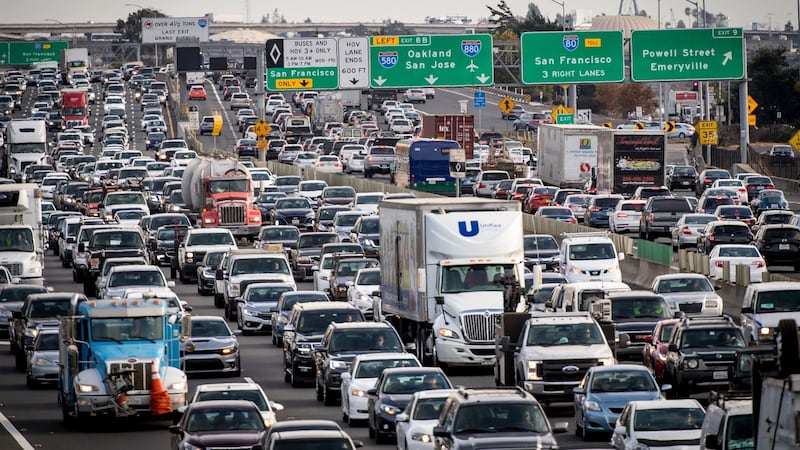
We pull in a few miles later to buy apricots and plums from a man named Mahmood, who arrived in the US in 1972. "I owned a small farm in Lebanon, now I own a small farm in California!" he smiles broadly. His nephew shows me how to tap a watermelon like a stud wall to check its quality. "They make fun of the Arabs, but it works," he laughs.
It’s Sunday afternoon - 50 years to the day after Easy Rider was released - and we hit traffic. Endless lines of families heading back to the city, replete with bicycles and suntans. The inefficiency of it all is inescapable.
I hand over the car, with 81 miles (in theory) still left to drive. By accident, I finally discover how to turn on the hazard lights - using an actual switch, not the touchscreen.
In On the Road, Sal Paradise and Dean Moriarty “saw the whole country like an oyster for us to open; and the pearl was there, the pearl was there”. But oysters have grit too, and America is full of it. Traffic jams, six-lane highways and characterless out-of-town retail stores. This is the real America. If Tesla sparks a revolution, it will still be an asphalt one. As I drove across California, I wished for another way.
In the sedentary, stultified days of the 1950s, the rebellious path was to hit the road. In a world of perpetual movement, perhaps the more rebellious path is to stand still. And to lobby for better public transport. – Copyright The Financial Times Limited 2019



















